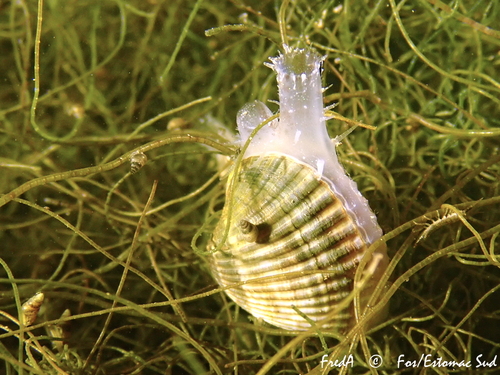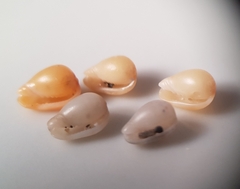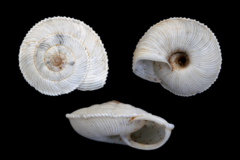Lagoon cockle
Cerastoderma glaucum
Cerastoderma glaucum, commonly known as the lagoon cockle or Koch's cockle, is a species of bivalve mollusk belonging to the family Cardiidae. This species is well adapted to brackish water environments and is frequently found in coastal lagoons and estuaries.
In the Comunidad Valenciana, Cerastoderma glaucum can be observed in natural habitats such as the Albufera lagoon and other similar ecosystems along the Mediterranean coast, where it plays a significant role in the local aquatic biodiversity.
- Appearance: The shell of Cerastoderma glaucum is typically rounded with prominent ribs and can vary in color from off-white to yellowish or brownish tones. The inner surface of the shell is often white and may exhibit a pearly sheen.
- Size: This bivalve usually measures between 2 to 5 centimeters in diameter, depending on environmental conditions and availability of resources.
- Habitat: Cerastoderma glaucum thrives in shallow waters of lagoons and estuaries where salinity levels fluctuate. Its adaptation to varying salinity makes it a keystone species in these ecosystems.
- Ecological Role: It is an important food source for various bird species and marine animals. Its presence contributes to sediment stability and water filtration, enhancing the overall health of its habitat.
- Conservation: As with many mollusks, Cerastoderma glaucum is susceptible to habitat changes caused by human activity and climate change, making its conservation important for maintaining ecological balance.
The presence of Cerastoderma glaucum in the Comunidad Valenciana highlights the region's rich marine diversity and the need for ongoing conservation efforts to protect these vital habitats for future generations.







